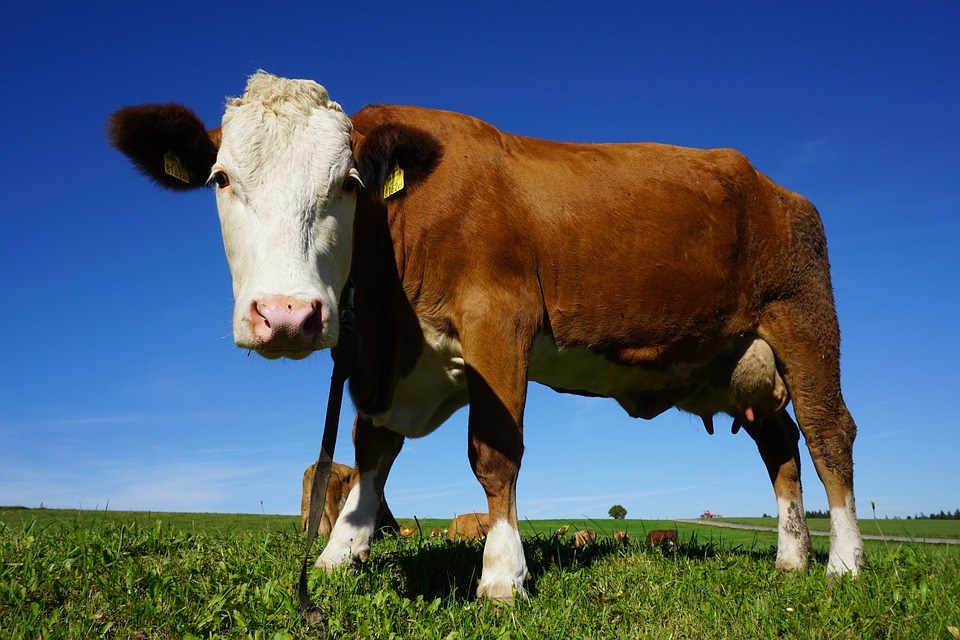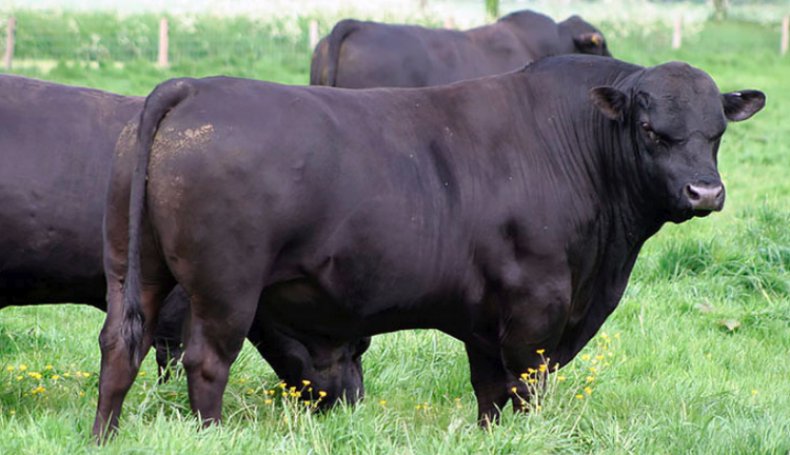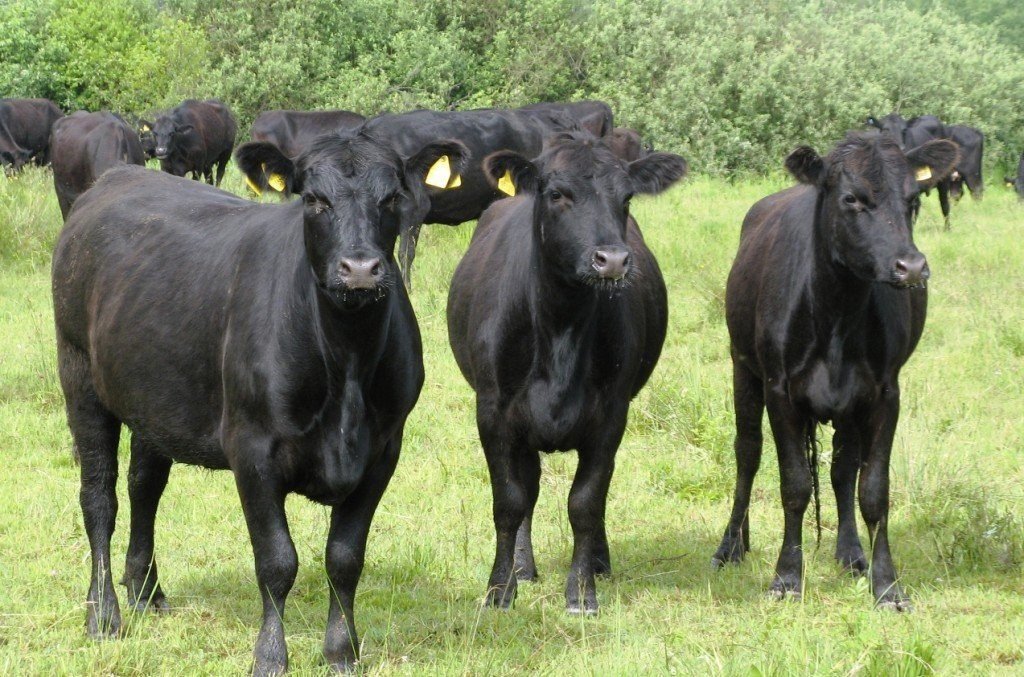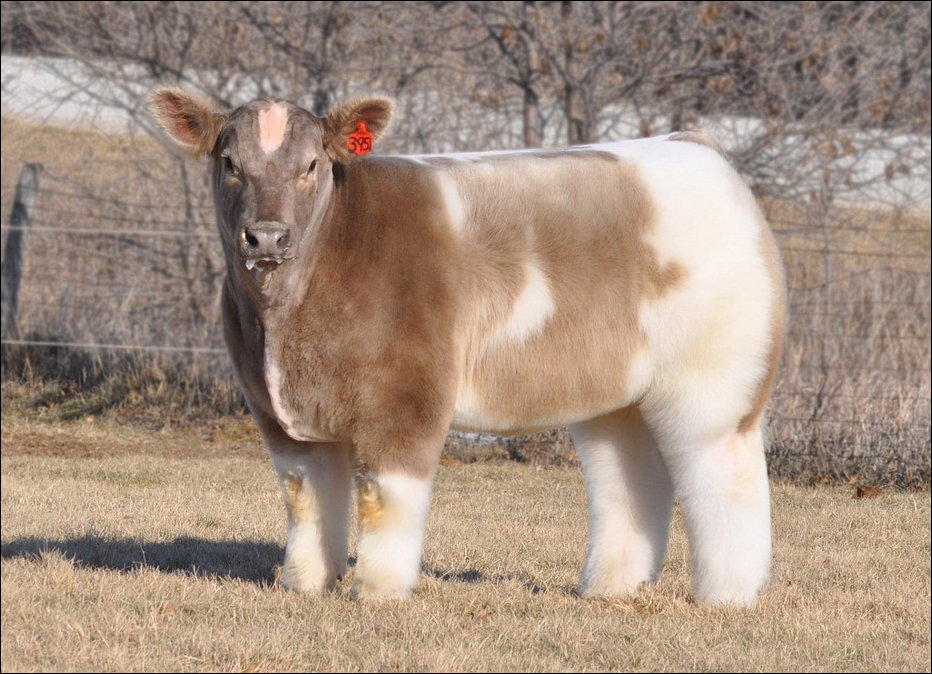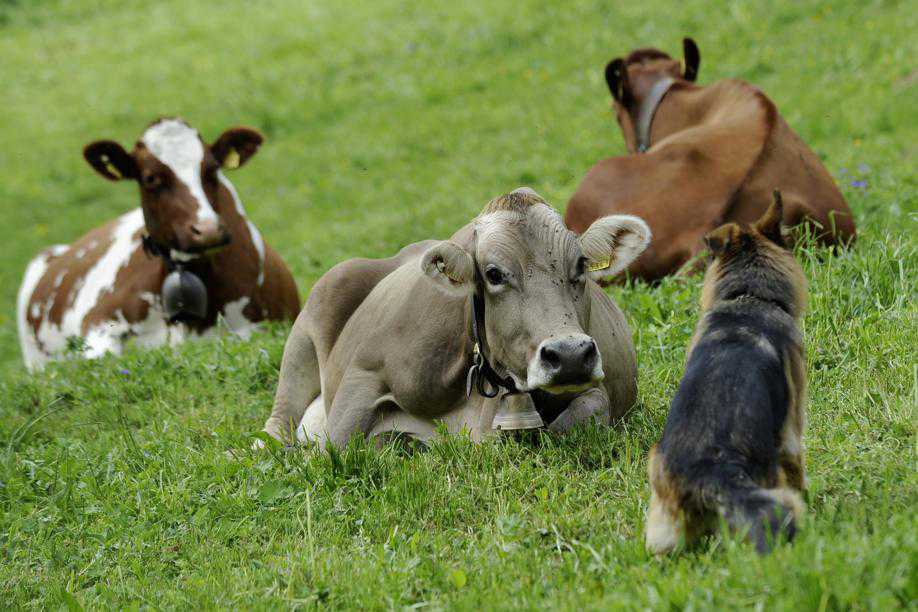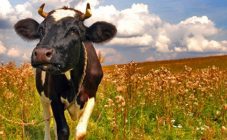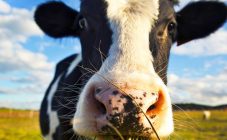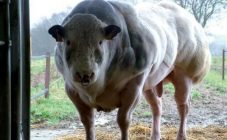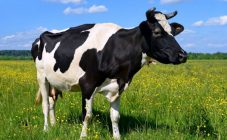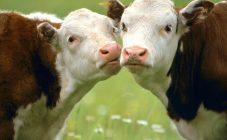Content:
There is an established stereotype of the appearance of a cow - a large, horned animal. Horns are the main cow attribute. But the lumpy breed has only growths on its head instead.
Description of a polished cow
One of the most common areas in animal husbandry is the development of new breeds. "Komel" is a pineal thickening at the end of a tree trunk of a plant. Large and some small horned livestock species have similar tubercles in the form of horn buds. Crumbness means the absence of horns, which is why animals began to be called that. This feature can exist for several reasons:
- deliberately cutting off horns for safety and reducing the risk of injury;
- acquired lumpiness due to crossing;
- hereditary factor.
For the convenience of maintenance and safety, livestock breeders decide to defer animals.
Thanks to the efforts of breeders, a breed of hornless cows was bred. When a hornless bull and a hornless cow are crossed, a completely hornless offspring in the first generation is obtained. At the second crossing, calves with horn buds appear. If you cross again, then offspring is formed, a quarter consisting of horned animals, mainly bulls.
When studying biology, students solve a problem: what offspring will be obtained by crossing a hornless homozygous cow with a horned bull. Correct answer: all hornless, according to the first generation uniformity rule. This task confirms the dominance of the hornless gene in cows.
Hornless cow breeds
Several breeds of cows have been bred, in which hornlessness is inherited.
Russian komola
Russian hornless, as a result of crossing of the Aberdeen-Angus and Kalmyk breeds, appeared in 2007 in the Stavropol Territory. This took about half a century. There are about 8 thousand heads in the livestock.
Characteristics of the Russian hornless cow:
- well-built, large rectangular body with a broad massive back and well-developed muscles of the chest;
- the head is small and light, there are no horns;
- the weight of the female reaches 1000 kg, the male - 1300 kg;
- all individuals are black;
- elastic skin.
The Russian hornless breed of cattle gives dietary meat with a low percentage of fat and a protein index of 5.5, exceeding the indicators of similar breeds. The meat has a marble shade, the amount of bones does not exceed 18% of the total carcass. Due to its high amino acid value, it is indicated for sick people who are on a diet. The animal is distinguished by fast acclimatization, stable immunity to many diseases. Russian hornless is unpretentious to feed, stress-resistant, hardy.
Aberdeen Angus
The Aberdeen Angus Horned Cow is a representative of the Scottish beef breeds. Its appearance dates back to the 19th century. The origin of the new breed was given by black, hornless representatives from the counties of Angus and Aberdeen. Besides Scotland, the breed is bred in Russia, USA, Canada and Australia.
Characteristics of the Aberdeen Angus Horned Cow:
- Dense, barrel-shaped build with a straight back and powerful loin;
- The head is heavy, there are no horns, the neck is practically absent;
- The legs are short with large hips;
- Height at the withers reaches 1.5 m;
- The weight of an adult female is 650 kg, a breeding male is over 950 kg;
- The coat is exclusively black.
With good feeding, the slaughter yield of meat exceeds 60%. The product is of high quality with a thin layer of fat. The breed is used for breeding other breeds and gives them clodness, as well as its indicators of meat productivity. The breed quickly acclimatizes, tolerates cold well.
Redpole
The English breed of hornless cow Redpole was obtained in 1850 by crossing dairy cows from the counties of Norfolk and Suffolk. This is a mixed breed of meat and dairy orientation. The Suffolk branch is represented by a red-and-white and chestnut dairy cow, and the Norfolk branch is represented by a bright red meat, horned one. Breeding takes place in England, Africa, Australia and the USA.
Specific traits:
- the physique is moderately full, deep;
- slightly shortened legs;
- some individuals may have white spots on the udder, tail;
- the body weight of a cow reaches 650 kg, a bull - 900 kg;
- the wool is smooth;
- suit - red and cherry.
Milk productivity is up to 4500 liters annually, milk fat content exceeds 4%. Excellent quality meat, slaughter yield of which is 60%. At 16 months of age, the cow becomes pregnant. The Redpole breed has good heat tolerance. Thick coat and thick skin effectively protect against insect bites. In isolated cases, annoying can be disturbed by the appearance of a horned specimen.
Cow from iowa
This decorative breed appeared in the American state of Iowa from the farmer M. Lottner. A cow costs about 5 thousand dollars, thanks to its unusual characteristics:
- small body size;
- the head is small, without horns, the neck is short;
- the back is straight, the back part is slightly raised;
- long tail ends with a tassel;
- there is no udder;
- soft, longish coat resembling plush;
- various chromaticity.
Meat indicators are in no way inferior to the rest of the hornless breeds. The plush coat of an Iowa cow requires special care.
East Finnish
This is a breed of dairy production. All representatives are 100% hornless. Characteristic:
- the weight of a cow does not exceed 600 kg, a bull - 700 kg;
- udder in the form of a bath, well developed;
- the color is light brown, the inner surfaces of the hind legs and the belly are white.
Slaughter meat yield does not exceed 50%. One lactation brings up to 7 liters of milk, the fat content of which is about 4.38%. Unlike previous breeds, the East Finnish hornless cow is quite whimsical. To obtain high rates of milk yield, an abundance of succulent grass in the feed is required. Animals need insulated barns in winter with a constant temperature of at least +5 degrees.
There is also a Shorthorn breed with short horns, due to the presence of the hornless gene. The Hereford breed was divided into two distinct types: horned and hornless.
Breed advantages and disadvantages
The main advantage of hornless cows is the impossibility of causing injury to their relatives. The horned goby often arranges fights with rivals for the status of the leader of the herd. Moreover, animals injure not only each other. There are cases of aggression towards people who care for them.
Hornless cattle are unpretentious in nutrition, high rates remain even in the absence of green forage.Due to this quality, hornless cows are raised in regions with scarce green forage. The animal is able to quickly get used to any type of food. It is distinguished by a high degree of stress resistance, without reducing its performance when moving or changing the owner.
The horned cow has its own advantages over the hornless breed. Horns allow animals to more effectively protect the herd from the attack of predators, and the offspring - from the attack of fellow herd. A cow with horns attracts males and competes for food. But the need for all these functions has disappeared as unnecessary. Animals get enough food, insemination is done artificially.
Horns serve as an identifier for the health of the cow, the strength of the constitution, and age. In a hornless animal, the condition of the teeth and other signs serve as a reference point for health and age.
Often, livestock breeders find it difficult to identify a hornless cow - is it a meat or a dairy one? But the presence or absence of horns is not an indicator of milk or meat production. This is judged by age, degree of fatness, body constitution of the animal.
Experienced breeders' recommendations
The successful management of hornless cow breeds is based on general rules for all types of cattle. Whether the cow has horns or not, watch out for:
- hygiene of keeping animals;
- good nutrition;
- regular check-ups with a veterinarian and vaccinations.
Hornless animals can be kept outdoors during the warm season. In case of heat, you need to take care of the canopy to create shade. A dry and warm barn is required during winter. If winter is not particularly harsh, then shelters and warm bedding are enough for them.
Hygienic procedures consist in regular washing of the trunk and hooves of cows, brushing the wool with stiff brushes. The food should consist of grass and fresh hay, compound feed, crushed grain, artificial additives. Care must be taken to ensure that drinking water is available, especially for calves.
The loss of horns is believed to have a negative impact on animals. But the hornless breed has earned the love of breeders, thanks to its excellent characteristics and unpretentious maintenance.
